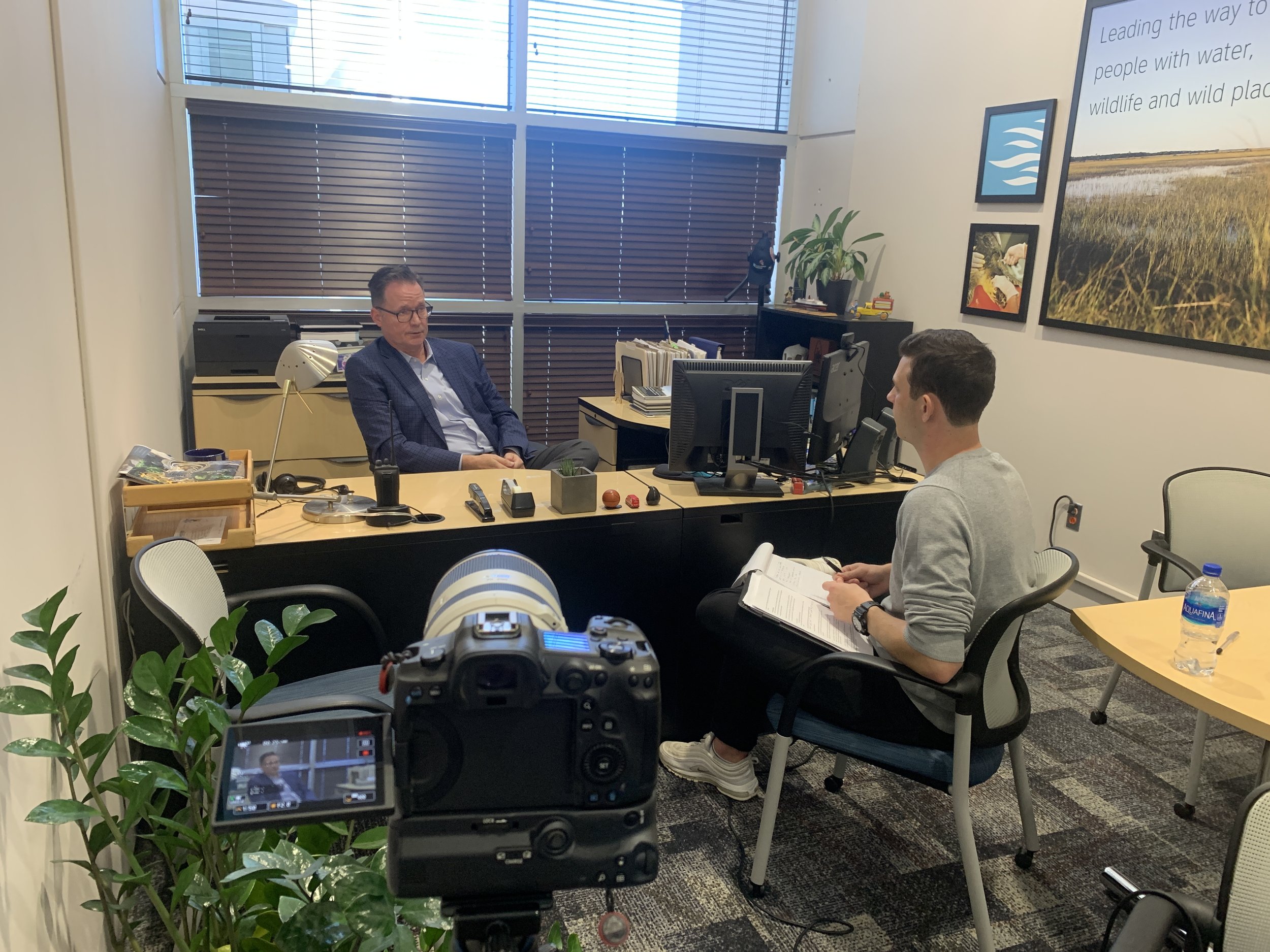Our Time With Kevin Mills
On November 19, 2021, the EDCO team visited the South Carolina Aquarium located in Charleston, SC to talk to their President, Kevin Mills. While researching the ways local communities were adapting to the emerging threat of flooding from sea level rise and natural disasters, we came across Kevin’s work. For Charleston, SC, flooding has become an increasingly frequent and severe event. This evolving issue has caused the need for innovative solutions.
In 2017, the College of Charleston modeled the impacts of future increases in flooding caused by sea-level rise. Currently, the city experiences over one foot of flooding twice a month. By 2030, this will increase to three times a month. Additionally by 2030, sea levels are projected to reach a point in which any marginal increases will result in drastic changes to the frequency of flooding. As a result, the frequency of flooding of over one foot will increase to roughly 26 times a month in the city. These trends indicate that the time for mitigating the effects of climate change has passed. For the residents of South Carolina, adaptation is vital.
These trends were one of the driving motivations behind the creation of the Center of Resilience Excellence in South Carolina. CORE-SC was founded by the South Carolina Aquarium, the College of Charleston and Charleston County government. According to Kevin, “The collaborative approach is intended to drive innovation in creating a more resilient community and state, and our plan is to engage NASA as a formal partner in technology transfer related to climate mitigation, water security, agriculture and more”
In October, 2021, Kevin had the opportunity to debut a predictive modeling tool developed alongside the Virginia Institute of Marine Science. The tool showcased the impacts of storm surge on the Charleston peninsula, as well as the impacts of a project known as a sea wall. We were immediately intrigued by this project, and decided to reach out to learn more about these projects.
The sea wall is a proposed $1.1 billion Army Corps of Engineers project to build a physical, onshore barrier around the downtown peninsula to keep the water out. We discussed the motivations behind this project, as well as the fight over the design, construction, timeline and even existence of the sea wall. Where the lines are drawn for the wall will determine which buildings and historical sites will be protected as well as the fate of hundreds if not thousands of people with the highest risk of being impacted by more frequent flooding.
As we looked out at the nearby port and the Charleston Harbor, it was difficult to imagine that what we were seeing could no longer exist. The importance of adaptation in some form, whether it be the sea wall or other measures couldn’t be further emphasized in that moment.



